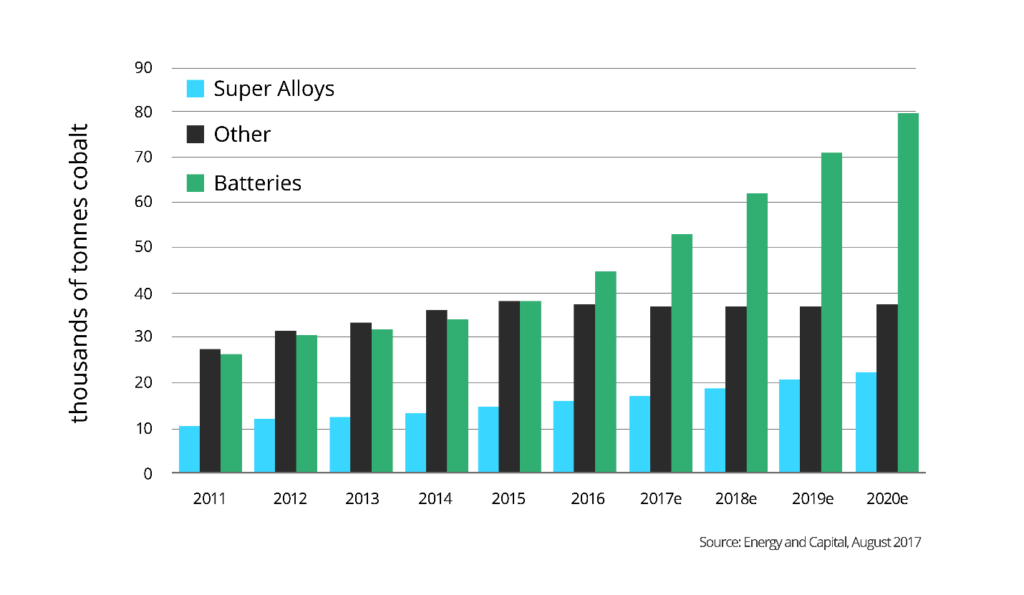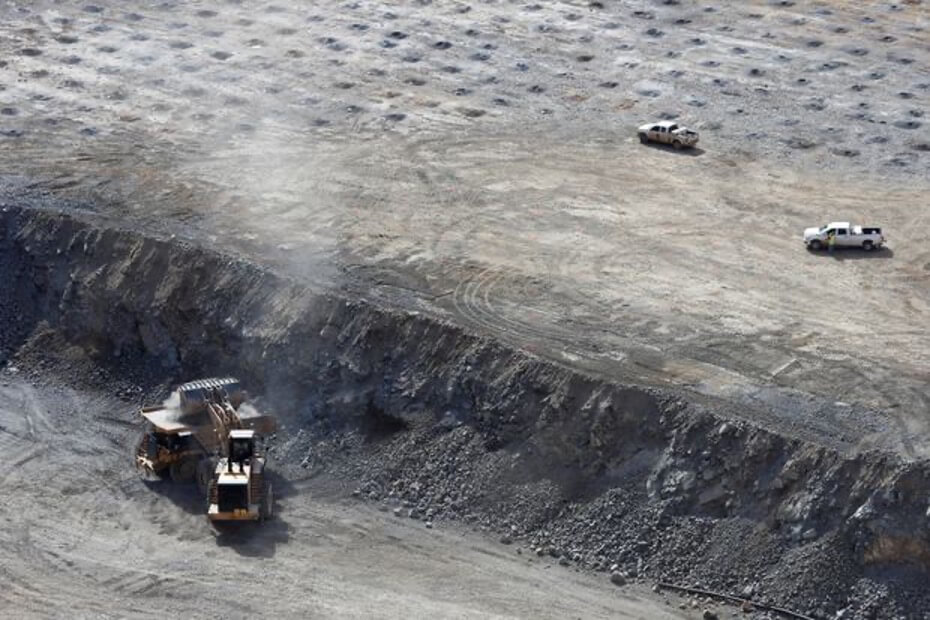Electric Vehicles (EVs) are increasing demand for Cobalt and Lithium: Two of the world’s rare earth minerals that come with their own environmental issues.
(Photo above: The MP Materials mine in Mountain Pass, Calif., is the only rare-earth producing mine in the U.S. (PHOTO: STEVE MARCUS/REUTERS Source Wall Street Journal)
Sustainability is not without its challenges for implementors and environmentalists. Think back several years to the paper or plastic debate. Paper bags were causing forests to disappear faster than certain organizations thought they should. Plastic was cheap and took less room to store. As a friend of mine put it, “kill a tree or kill a fish.”
Plastic unfortunately won out. Now not only do we need oil to create plastic for the bags, but plastic has also generated a significant amount of pollution. While plastic bags are not responsible for all of it, plastics generate microplastics that are beginning to create larger health and environmental concerns as they are found in fish and potable water sources.
Moving to a more sustainable landscape has similar challenges that will need to be addressed and resolved as the world moves away from energy derived from oil and gas to energy derived from renewables and more electrification. For renewables to be successful, longer-term storage techniques are needed. Water pumping, Hydrogen generation, and batteries will all play a role in longer-term storage. In many cases, these are and will be batteries.
One of the reasons for the recent boom in renewables is that battery storage is now economical and reliable enough to store energy for a considerable amount of time. Even more critical are the storage techniques that can supply power over many hours so that buildings and factories can run on stored renewable energy overnight, thereby reducing the need for greenhouse-producing energy sources. This is a big boost for renewables and there has been strong growth in both storage and renewable projects over the past year.
However, as suggested above the transition to renewables is not without its challenges. Increased demand for Lithium and Cobalt is requiring new sources to be developed, which will require a delicate balance in the geopolitical environmental economics of renewables.
Rare Earths Mining
When you include electric vehicles in the renewables and electrification equation, the demand for rare earth minerals needed for both batteries and magnets increases.
Rare earth minerals are a highly valued commodity. China currently controls 80% of the world’s resources and refines most of the rare earth minerals mined in the world. This in and of itself is not an issue unless rare earth minerals become politicalized, which occasionally they do. In 2010 China restricted rare earth mineral shipments to Japan. It is entirely possible this could happen to the United States or Europe as well if China deems rare earth minerals to be a strategic commodity. The United States currently gets about 80% of its rare earth supply from China, so a disruption in the supply chain would have a serious impact.
There are 2 rare earth mines outside of China: One in the United States and one in Australia. There is the potential for one in Greenland, and there are other lithium sources. The Mountain Pass project in the United States currently sends its ore concentrate to China to be refined. Another project named Round Top expects to be in production in 2023 and has developed a mine-to-magnets methodology that will be based entirely in the United States. One of the key elements from some rare earth mines is lithium used in batteries, as well as materials needed in magnets for electric motors.
Recently another potential rate earth project was recently shelved in Greenland. This project was expected to provide approximately 10% of worldwide rare earth production.
One of the reasons this project was shelved was due to environmental concerns. There was the potential release of Uranium and the second that Greenland’s carbon dioxide emissions would increase by 45%. Also, a bit of worldwide politics was also involved. This decision could eventually switch back due to the demand for rare earths, and an increase of sources that are not totally controlled by China, but it will be interesting to see the economics versus environment versus politics play out over time.
The mining and refining of rare earths, as in most mining of resources, has environmental tradeoffs. This includes piles of tailings that can create landslides and concentrate hazardous waste, the potential for groundwater contamination, and the CO2 footprint — although EVs are starting to be developed for mining purposes — the potential for radiation exposure, and more. In developed countries, most of the contamination issues are tracked and attempted to be kept to a minimum. In less developed countries, there is less oversight and disasters can take place, such as recently in Brazil.
Cobalt is another key metal used in batteries for renewables. The primary world source is in the Congo, which produces nearly 70% of the world’s cobalt. While there are environmental concerns with mining cobalt that are associated with other metals, cobalt production also has concerns regarding human capital that in recent years has gained significant focus regarding illegal mining, human rights, child labor, and corruption. In the renewables and semiconductor industry most if not all, companies are closely monitoring their supply chains to ensure their suppliers are using cobalt from companies that employ DRC conflict-free materials.

Battery Recycling
Fortunately, there is a bright side to this discussion. Lithium batteries have been with us long enough that there is a significant recycling effort now taking place as the economics are favorable due to higher lithium and cobalt pricing. There are several companies worldwide that are recycling batteries, many of them in their early phases. As the executive for Redwood Materials states, the largest lithium mine is in the junk drawer of Americans; based upon the amount of cobalt in Li batteries, it is likely there is a considerable supply of cobalt as well.
With the number of battery recyclers emerging, companies that produce electronic equipment can help promote a cyclical economy by taking greater steps to ensure their products that include Li batteries get sent to recycling and not to landfill. Another advantage that this creates is there is now a supply of Lithium and Cobalt that doesn’t need mining and as a significant refining process for the renewables and electronics industry.
A key challenge for the renewable industry will be balancing the geopolitical, economic, environmental issues that will arise as the industry grows. In many cases, it may just boil down to paper or plastic.



















